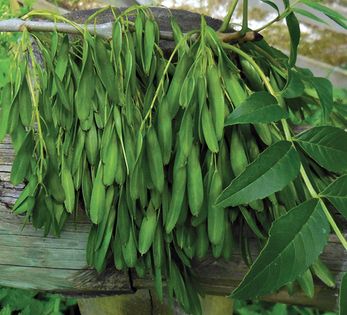Advertisement
Ash
Appears in
Published 1986

Ash Keys
Fraxinus excelsior This is a common deciduous tree, generally distributed throughout the British Isles except in the Shetlands and the Scottish Highlands. It flowers in April and early May, then the keys develop in late May and may persist on the trees until November.
The ash tree is commonly found in folklore from all over Europe. The Yggdrasill-tree of Scandinavian mythology was an enormous ash whose roots spread in three directions: heaven, earth and hell. Under each root is a fountain of wonderful virtues while in the tree, which drops honey, are an eagle, a squirrel and four stags. There is a serpent, Nighhoggr, gnawing at the root, while the squirrel, Ratatoskr, runs up and down the trunk sowing strife between the eagle and the serpent. The legend also asserts that the gods made the first man, Askr, from ash wood. It was by using ash branches that witches were enabled to fly, although in Lincolnshire use of the female ash tree, called Seder, would defeat a male witch, while the male tree, Heder, would defeat a female witch. Failure of the ash-seed crop was thought to foretell a royal death and a failure in 1648 was said to predict the execution of Charles I on 30 January 1649. A circle of ash twigs around the neck was said to cure an adder bite, while an ash leaf with an equal number of divisions on each side was thought to be lucky so that with ‘The even-ash-leaf in my hand, the first I meet shall be my man’. As a wood for fuel, ash is said to be the best while still green but of little use when dry:

